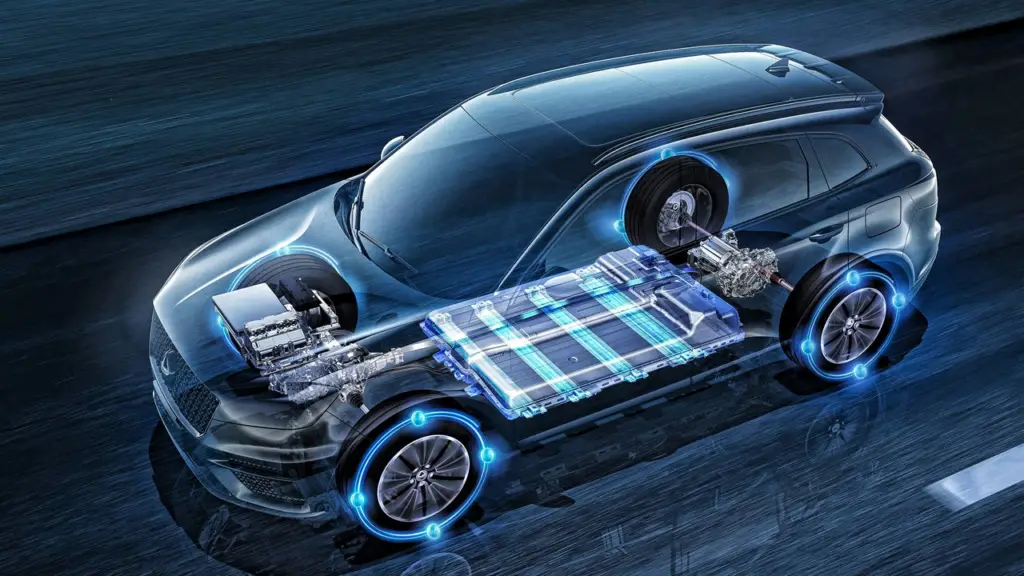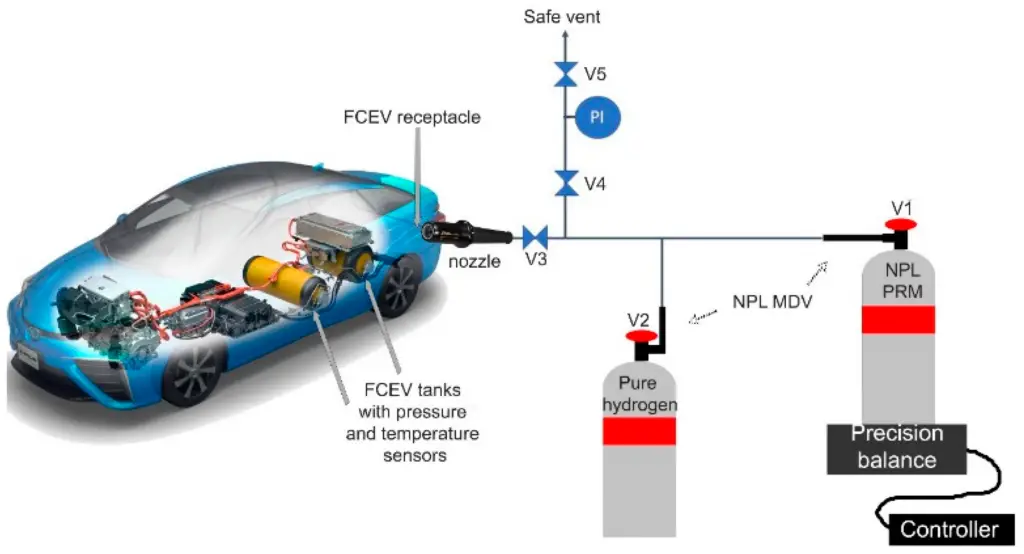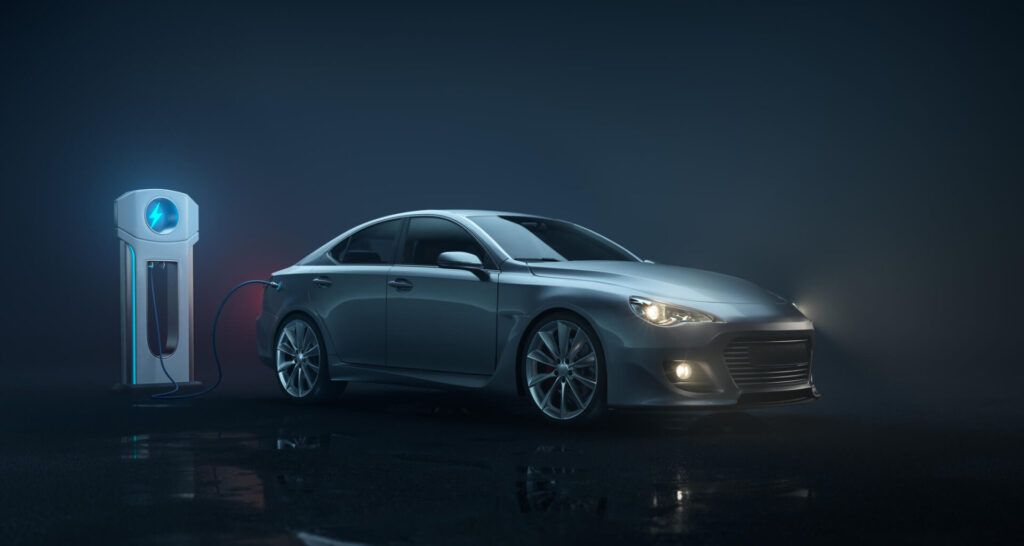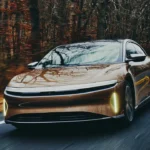In the automobile industry, electric vehicles, or EVs, are becoming more and more prominent as the globe gradually shifts to sustainable energy sources. About 16% of all new cars sold in the US in 2023 were electric vehicles (EVs), indicating a strong trend toward electrification.
Yet, for many consumers, the journey into EV ownership is fraught with questions, particularly about the different types of EVs available and how they are charged.
This comprehensive guide delves into the four main types of EVs, exploring their unique features, charging methods, and critical considerations. By the end, you’ll have a deeper understanding of how these vehicles differ and which one might align with your driving needs.
Battery Electric Vehicles (BEVs): Fully Electric Powerhouses
Battery Electric Vehicles (BEVs), often referred to as “all-electric vehicles,” rely entirely on electricity to function. These vehicles are devoid of an internal combustion engine, instead using a battery-powered drivetrain for all operations.

Key Characteristics of BEVs
- BEVs offer a sleek, futuristic design that distinguishes them from traditional gas-powered cars.
- They are whisper-quiet in operation and boast exceptional handling responsiveness.
- Since BEVs don’t use power while idling, they are ideal for urban traffic conditions.
Battery capacity and driving range have significantly improved in recent years. While earlier BEVs were limited to around 100 miles per charge, modern models now achieve ranges of 300 miles or more, thanks to advancements in battery technology.
| Model | Battery Size (kWh) | Driving Range (Miles) |
|---|---|---|
| Tesla Model 3 | 60-75 | 263-353 |
| Chevrolet Bolt EV | 65 | 259 |
| Ford Mustang Mach-E | 70-91 | 230-312 |
Charging BEVs
BEVs offer three primary charging levels:
- Level 1 (AC): Using a standard 120-volt home outlet, BEVs can recharge overnight. This is the slowest charging method.
- Level 2 (AC): Utilizing a 240-volt outlet (commonly installed at homes or public stations), Level 2 chargers can recharge a BEV in just a few hours.
- Level 3 (DC Fast Charging): Found at commercial charging stations, DC fast chargers use direct current to provide a rapid energy boost, ideal for road trips.
Costs and Incentives
BEVs range in price from $30,000 to over $100,000, with popular models like the Chevrolet Bolt and Tesla Model 3 priced under $40,000. Additionally, many BEVs qualify for federal tax credits of up to $7,500, depending on battery component and mineral sourcing requirements.
“With approximately 2.4 million BEVs on U.S. roads today, these vehicles represent the pinnacle of sustainable driving and minimal maintenance costs.”
Plug-In Hybrid Electric Vehicles (PHEVs): The Best of Both Worlds
For drivers who value versatility, Plug-In Hybrid Electric Vehicles (PHEVs) provide a blend of electric efficiency and the reliability of a gasoline backup. PHEVs feature both a battery-powered motor and an internal combustion engine, offering flexibility for longer journeys or areas with limited charging infrastructure.

Key Characteristics of PHEVs
- PHEVs operate on electricity for 20-40 miles before seamlessly switching to gas for an additional 300+ miles.
- The smaller battery size (typically 10-15 kWh) translates to faster charging times and lower costs compared to BEVs.
| Model | Electric Range (Miles) | Gas Backup Range (Miles) | Price |
|---|---|---|---|
| Toyota Prius Prime | 25 | 640 | ~$28,000 |
| Hyundai Tucson PHEV | 33 | 421 | ~$37,000 |
| Ford Escape PHEV | 37 | 500 | ~$39,500 |
Charging PHEVs
PHEVs share charging similarities with BEVs but cannot utilize DC fast chargers. They can be recharged using:
- Level 1 (AC): Overnight charging at home.
- Level 2 (AC): Faster charging at public stations or with a home-installed outlet.
Affordability and Incentives
PHEVs generally cost between $25,000 and $40,000 for non-luxury models. Like BEVs, they are often eligible for federal tax credits, making them a budget-friendly option for eco-conscious buyers.
“PHEVs provide peace of mind with a dual-energy approach, ensuring that range anxiety never hinders your travel plans.”
Hybrid Electric Vehicles (HEVs): The Pioneer of Green Driving
Hybrid Electric Vehicles (HEVs) were the trailblazers of environmentally friendly transportation, combining a gas-powered engine with a battery-assisted motor. Unlike PHEVs or BEVs, HEVs do not require external charging; instead, they use regenerative braking and the engine itself to recharge the battery.

Key Characteristics of HEVs
- HEVs are more fuel-efficient than traditional gas-powered vehicles and emit lower levels of CO2.
- They offer cost savings on both fuel and maintenance but lack the performance “zip” of full EVs.
A notable limitation is that HEVs cannot operate solely on electric power if the gas tank is empty. Additionally, they tend to be less efficient on extended highway drives.
| Model | Fuel Efficiency (MPG) | Price |
|---|---|---|
| Toyota Corolla Hybrid | 52 | ~$24,000 |
| Honda Insight | 55 | ~$26,000 |
| Hyundai Ioniq Hybrid | 59 | ~$23,000 |
“For drivers transitioning from traditional vehicles, HEVs strike a balance between familiarity and innovation.”
Fuel Cell Electric Vehicles (FCEVs): The Hydrogen Revolution
Fuel Cell Electric Vehicles (FCEVs) represent the cutting edge of EV technology, utilizing hydrogen gas to generate electricity. Instead of relying on stored battery power, FCEVs use a chemical reaction between hydrogen and oxygen to drive their electric motor.

Key Characteristics of FCEVs
- FCEVs can travel approximately 300 miles on a single tank of hydrogen.
- They produce zero emissions, with water vapor as the only byproduct.
However, FCEVs face challenges, including:
- Limited hydrogen fueling infrastructure.
- High costs of hydrogen production.
- A scarcity of models available for purchase.
Currently, only Toyota and Hyundai offer FCEVs in the U.S., with approximately 15,000 units on the roads.
“While still in its infancy, FCEV technology has the potential to redefine sustainable mobility.”
The Future of Electric Vehicles
The EV landscape is poised for continuous evolution, driven by technological advancements and an expanding charging infrastructure. As Battery Electric Vehicles (BEVs), Plug-In Hybrids (PHEVs), and Hybrids (HEVs) dominate the roads, the emergence of Fuel Cell Electric Vehicles (FCEVs) heralds a future of unprecedented innovation.
Key Trends to Watch
- Increased focus on battery efficiency and sustainability.
- Expansion of fast-charging networks to support long-distance travel.
- Development of hydrogen fueling stations to facilitate FCEV adoption.
To support this transition, tools like the EV Connect Driver App simplify the charging process by helping users locate chargers, monitor status, and make payments seamlessly.
Conclusion
Understanding the nuances of EV types is essential for making an informed purchase. Whether you prioritize the zero-emission promise of BEVs, the versatility of PHEVs, the affordability of HEVs, or the cutting-edge technology of FCEVs, there’s an EV to suit every lifestyle.
As the industry continues to innovate, one thing is clear: electric vehicles are not just the future—they are the present.
“Sustainability isn’t a choice; it’s a responsibility. Choose wisely. Drive electric.”



